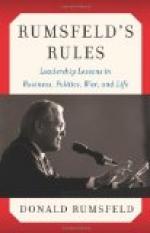THE DECISIVE BATTLE
January 18th, 1900
Yesterday began the action upon which in all probability depends the future course of the war. By the time these lines are in the reader’s hands more will be known of the battle that can be guessed to-day by the wisest, though several days may pass before the result is fully known.
Sir Redvers Buller on Wednesday, the 10th, had under his command three infantry divisions, a cavalry brigade, some two thousand mounted infantry, and probably altogether about eighty guns. Clery’s division consists of Hildyard’s and Lyttelton’s brigades; the third division, comprising Hart’s and Barton’s brigades, is not known to have had a commander appointed; Warren’s division is composed of Woodgate’s brigade and of half of Coke’s brigade, to which another half may have been added by taking two battalions which have been some time in Natal, and belong neither to Clery’s nor to the third division. The whole force ought to be thirty thousand strong for a fight, taking the division at nine thousand instead of ten thousand, for though there have been losses there have also been drafts to fill up gaps. A party of mounted troops probably one thousand strong is reported to have been detached a few days ago by rail to Stanger on the coast near the mouth of the Tugela, and thence to have disappeared on a mission of which the purpose is as yet unknown, though it looks like a raid upon the railway between Dundee and Newcastle. The strength of the Boers in Natal has never been accurately known, and the estimates differ widely, ranging from thirty-five thousand to more than double that number. Sir George White may have nine thousand effectives at Ladysmith and might be contained by fifteen thousand Boers, perhaps by a smaller number. There will, therefore, be available against Sir Redvers Buller a force on the lowest estimate about equal to his own, and possibly outnumbering it by two to one.
On Wednesday, the 10th, the British force started westward. No telegram as yet gives its distribution, but it is plain that Clery’s and Warren’s divisions moved out, together with the cavalry brigade and whatever mounted infantry had not been sent south. Hart’s and Barton’s brigades, or one of them, with a proportion of artillery may be assumed to have been left in the entrenchments which face Colenso and cover the British line of communications by the railway. On Thursday morning Lord Dundonald with the cavalry brigade and some of the mounted infantry was in possession of the hills overlooking Potgieter’s Drift and of the pont or ferry-boat. The same day the infantry or the leading division, Clery’s, was in the hills north of Springfield. Lord Dundonald’s force commanded the river at Potgieter’s Drift, and the crossing there was thus assured. A pause of four days followed: a pause probably not of inaction, but of strenuous preparation in order to




